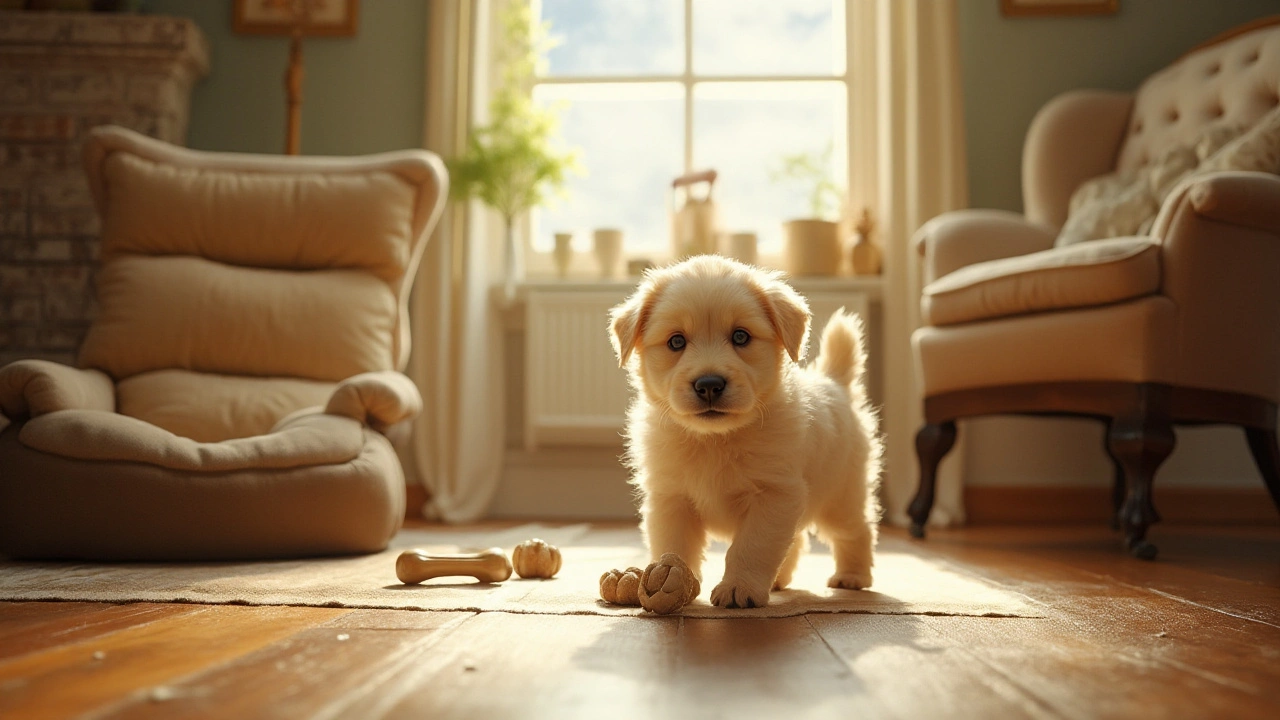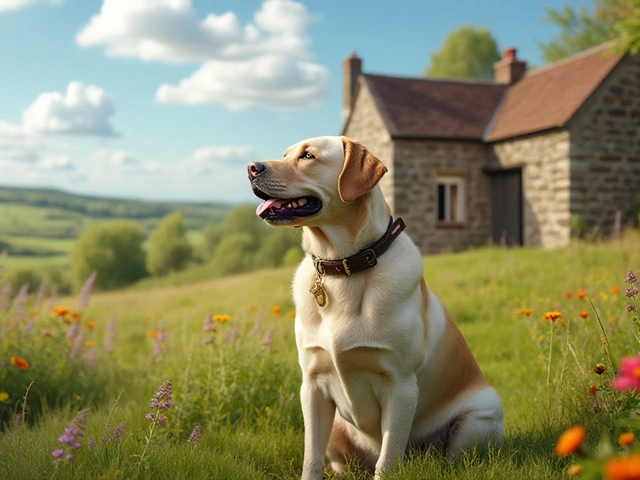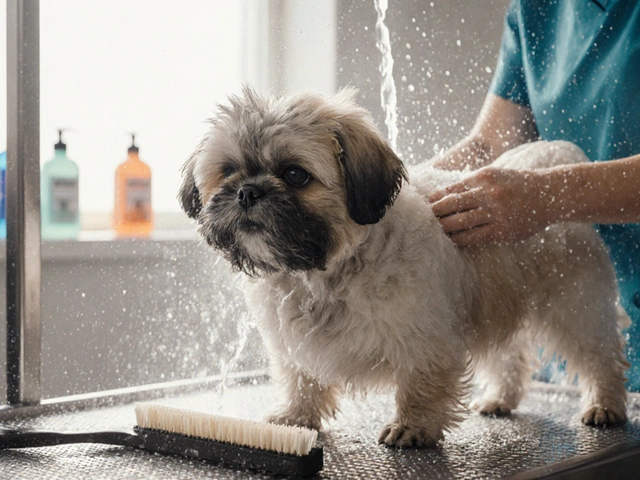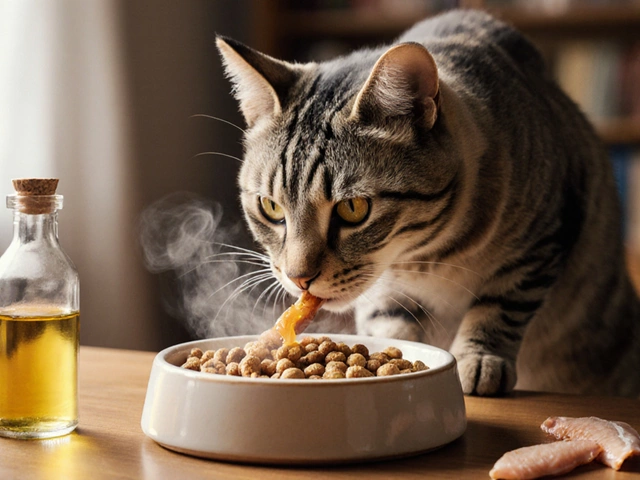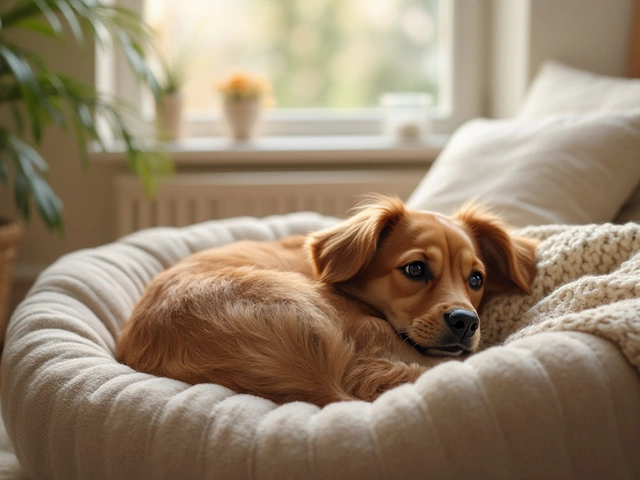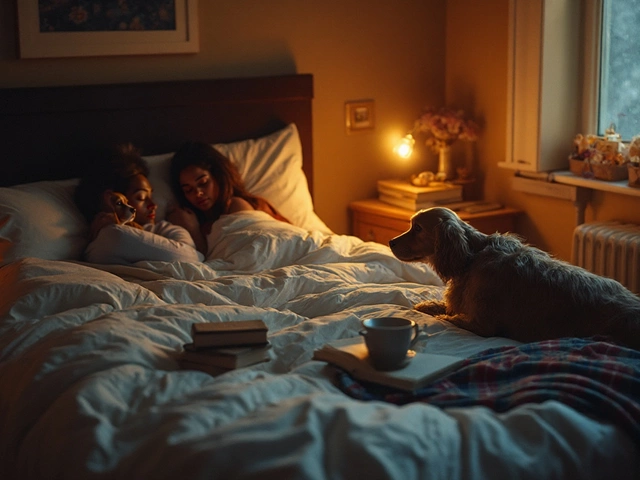Bringing a new puppy into your home is a wonderful and exciting adventure. As they learn and grow, you might find yourself eagerly anticipating the moment you can let them roam freely. But how do you determine when the time is right? It's not just about reaching a specific age; each puppy is unique, with its own pace of learning and adapting.
Ensuring that your puppy is ready to explore your home safely requires a mix of preparation and understanding. It's about observing their behavior, setting up learning boundaries, and gradually introducing them to new environments within your household. By taking these steps, not only do you safeguard your belongings, but you also help your puppy develop confidence and trust.
- Determining Readiness for Exploration
- Establishing a Safe Environment
- Gradual Introduction to Freedom
- Troubleshooting Common Challenges
Determining Readiness for Exploration
It can be incredibly heartwarming to watch a growing puppy develop curiosity about their surroundings. But before allowing your furry little friend to explore the entire house, it’s important to ensure they are genuinely ready. Readiness for this new adventure varies among puppies and isn't solely about their age. Instead, it’s about meeting certain developmental milestones and demonstrating responsible behavior. House training your pup forms the basis for this freedom. If your pup has grasped basic commands such as ‘sit,’ ‘stay,’ and ‘come,’ then they might be learning to control their impulses and act more responsibly throughout the household. Has your puppy successfully proven their understanding of these simple commands? If so, progression to the next step can become a reality sooner than expected.
Health and vaccination are other critical factors to consider. Young pups are still developing their immune systems, so ensuring they are up-to-date with vaccinations sets a foundation for their health as they become exposed to diverse environments. Pair this with socialization techniques to help ease anxiety or fear in unfamiliar situations. Puppies exposed to new sights and sounds are more likely to adapt seamlessly as they wander around the house. Dr. Karen Overall, a board-certified veterinary behaviorist, suggests, "Exposing puppies safely to different environments positively affects their behavioral development." The more varied their world, the better prepared they’ll be for anything life throws their way.
But readiness isn’t just behavior-driven; it involves understanding your home’s physical setup too. Having zones within your home is helpful; consider them as levels in a video game where the puppy earns access to new zones as a reward for good behavior. Is there a designated safe space where they can retreat if they feel overwhelmed? Can you rearrange furniture and secure loose wires to avoid accidents? Ensuring the environment is puppy-proofed could make the task of watching your little one feel far less daunting. This brings us to puppy-safe zones, where providing safe chew toys and entertainment options can help promote independence while curbing problematic behavior, such as excessive chewing on furniture.
In deciding readiness, pay attention to the cues your puppy gives you. Observing body language offers insight into your pup’s comfort level within their environment. Happy tail wagging and relaxed posture signify that they’re feeling safe, while nervous pacing and whining indicate uneasiness. As a pet parent, knowing how to interpret these signals is key in determining how much freedom to give your pup at different times. With patience and understanding, it will soon be possible for your growing pup to confidently explore their home, their tail wagging with excitement as they navigate their expanding world.
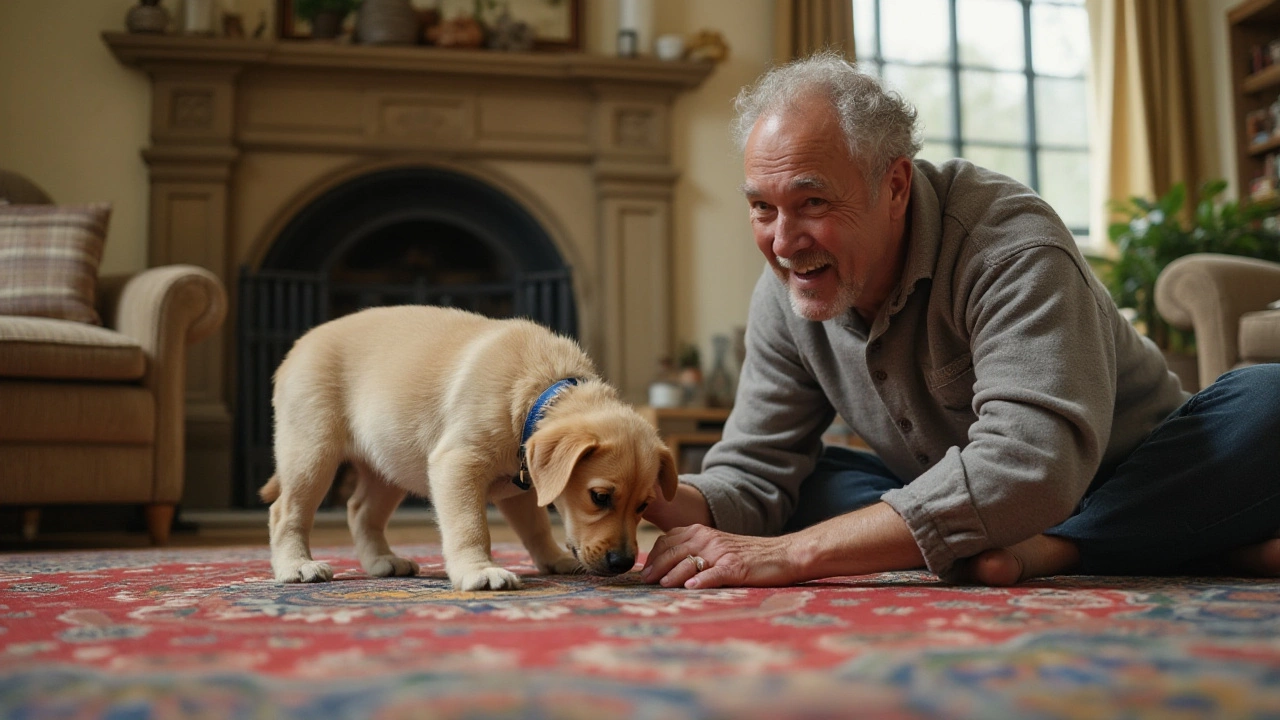
Establishing a Safe Environment
Welcoming a curious puppy into your home involves creating an environment where they are free to explore, yet protected from potential dangers. This balance begins with a thorough safety check of your living space. Puppies, with their natural urge to explore, often investigate the world with their mouths. Items such as electrical cords, houseplants, and small objects become safety hazards. One way to counteract this is by employing cord concealers and securing loose items that might entice small, roaming puppies.
Creating a safe environment not only prevents accidents but also encourages healthy exploration. Place baby gates strategically to restrict access to rooms you can't puppy-proof. For example, the kitchen and bathroom can be especially perilous due to cleaning supplies and food items within reach. Block these areas to ensure your pet remains in safe, observable zones where you can monitor their activities without worry.
In an article on pet safety, veterinarian Dr. Sarah Allison once shared, "The idea isn't to limit your puppy's curiosity but to set the stage for safe discovery. By preparing your space, you're effectively inviting them to learn and grow in a controlled setting." This approach ensures your puppy's freedom comes with built-in safety that eases your mind.
A key aspect to consider while making your home pet safe is understanding the nuances of dog-specific hazards. For instance, many decorative houseplants like lilies and philodendrons can be toxic to dogs. Switching to pet-friendly alternatives or elevating plants is advisable. Similarly, small children’s toys or laundry items like socks can pose choking hazards.
Organizing your space with the puppy’s needs in mind, such as providing access to safe chew toys or puzzle feeders, can prevent boredom and destructive behavior. It might be beneficial to create a designated area with their bed, toys, and feeding dishes to give them a sense of ownership and belonging. Puppies thrive on routine, and a consistent arrangement helps manage their energy levels. Incorporating elements like these can significantly ease the transition phase.
To truly make the experience enriching, consider the importance of soundproofing. Puppies, much like babies, can be sensitive to noises. Temporary solutions, like thick curtains and rugs or even white noise machines, can help in reducing the anxiety caused by loud sounds. All these steps aren’t just about physical safety; they contribute to a mentally stimulating environment where puppies feel comfortable and secure.
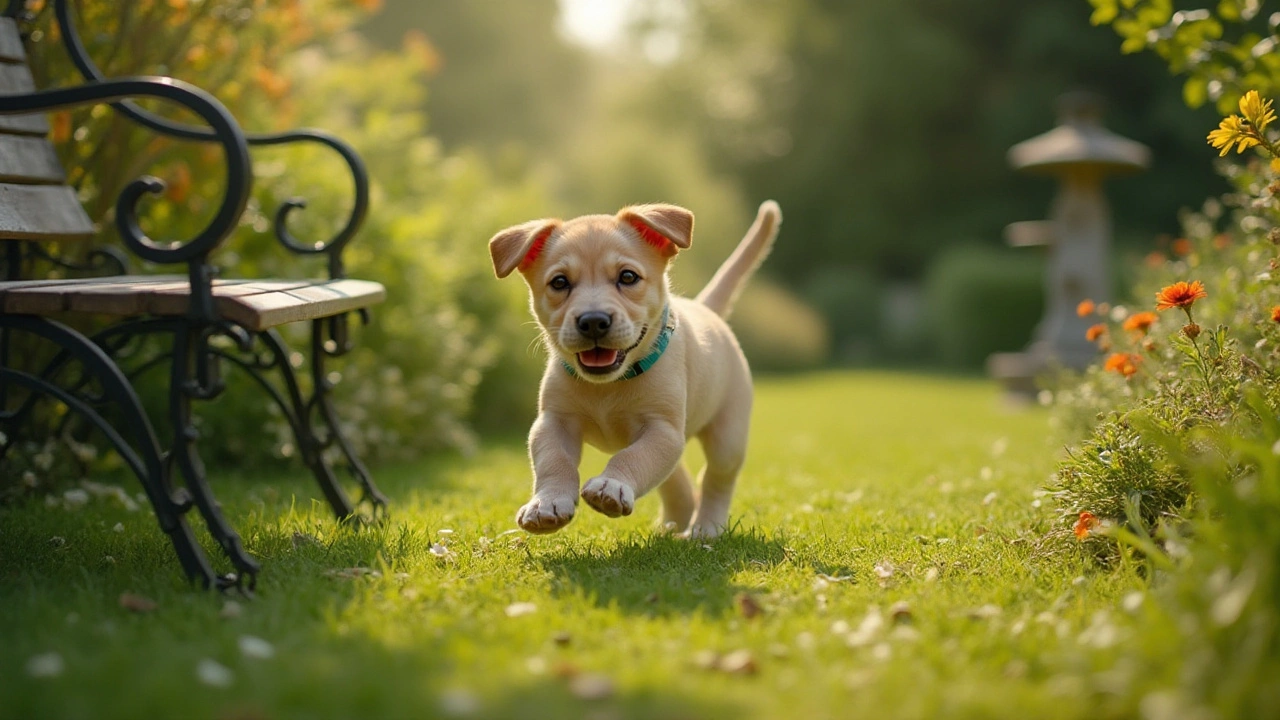
Gradual Introduction to Freedom
Letting your puppy roam the house gradually is much like letting go of a child’s hand for the first time. It can be a nerve-wracking yet fulfilling journey as you witness a growing sense of independence and curiosity. Start by giving your pup access to one room at a time. This approach allows them to familiarize themselves with new settings, aromas, and sounds without becoming overwhelmed. Gradual exposure also helps in managing their energy and gathering valuable clues about their behavior when not confined. You'll want to ensure that each area is safely puppy-proofed to prevent any mishaps.
Consider using gates or baby fences to section off parts of your home, allowing your puppy access only to areas that you're confident are safe. As they begin exploring, observe how they interact with different objects and textures. For instance, do they chew on furniture or cables? Are they comfortable with different floor types such as tiles, wood, or carpet? Understanding these responses helps in tailoring their introduction to freedom so that it becomes a positive experience for both of you.
Once enough comfort is established in one area, it’s time to expand their boundaries gradually. Introduce rules and routines, such as not jumping on couches or beds if that’s a household norm you want them to follow. Use verbal cues consistently to reinforce good behavior. Remember that puppies, like us, are creatures of habit. By establishing expectations early on, with patience and repetition, your puppy care efforts will begin to take shape as your furry friend starts navigating their new world confidently.
“Providing a safe, structured environment encourages exploration without the constant fear of accidents,” says Dr. Emily Grace, a renowned animal behaviorist. “It’s a progressive developmental phase that emphasizes trust and discipline.”
As you expand their roaming range, remain attentive to their needs for frequent breaks and rest. Puppies tire easily, and a tired pup is often a mischievous one. Gradually increasing their access can also benefit their bladder control. Many remember that house training aligns naturally with their increased freedom over time. By being mindful of their body language, you're not only providing a safe haven but are also reinforcing essential skills that will help them grow into well-adjusted adult dogs.
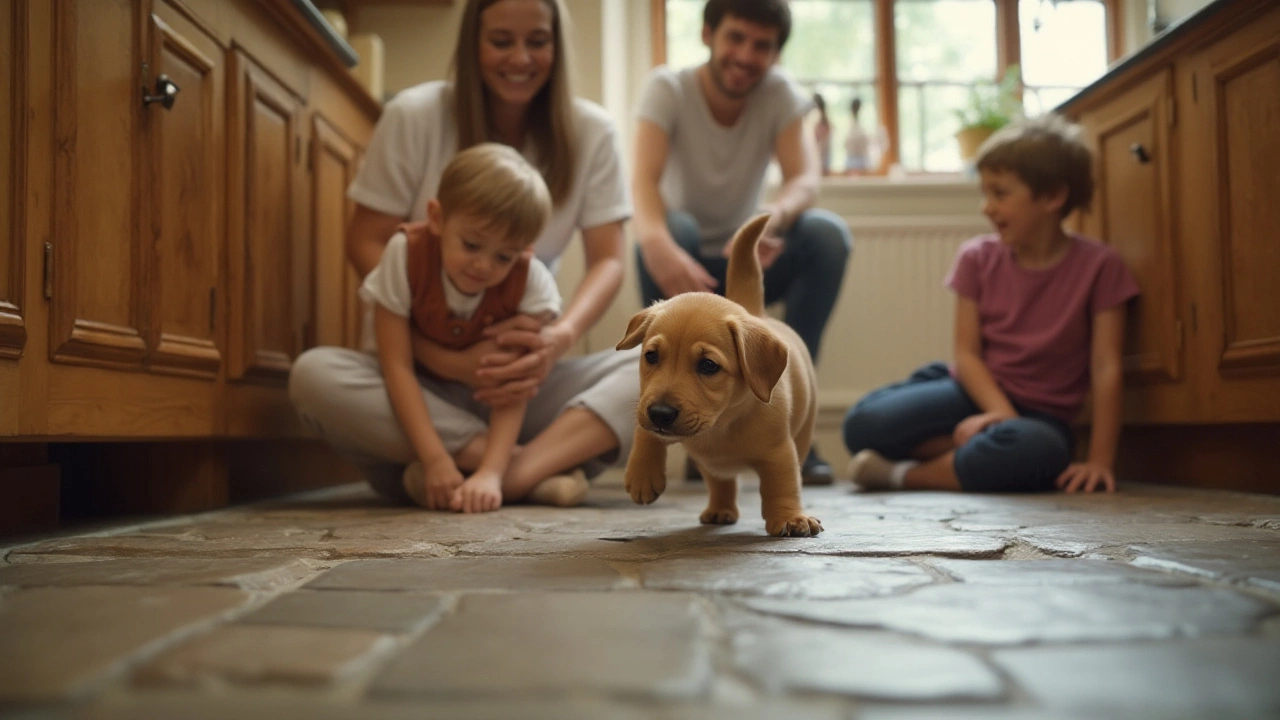
Troubleshooting Common Challenges
Once a puppy starts roaming the house, it's not uncommon to encounter various challenges. Puppies are naturally curious and somewhat mischievous, often leading them into tricky situations. Initial problems might include stealing your favorite socks, chewing on couch edges, or having unexpected accidents. To mitigate these issues, understanding their root causes is vital. Puppies explore with their mouths and paws as they navigate their environment. Therefore, chewing isn't merely a destructive act; it's often a sign of teething or boredom. Providing appropriate chew toys can help redirect this natural urge. By identifying the source of these behaviors, you can implement solutions that satisfy your pup and preserve your household's integrity.
House training accidents are another considerable hurdle when allowing your puppy to roam. It's essential to remember that puppies have small bladders and cannot hold their needs for long periods. Creating a consistent routine for toilet breaks, particularly after meals, wakes, and playtimes, will aid in establishing good habits. Utilizing positive reinforcement can be extremely effective here. Reward your puppy with treats or praise when they relieve themselves outside. This builds a positive association with the behavior. Patience is key since it can take several months for a puppy to be completely house-trained. If accidents persist, consulting with a veterinarian to rule out medical issues can also be beneficial.
In some homes, a puppy's mischievous exploration might revolve around unsafe areas—like kitchen detergent cabinets or open staircases. It's beneficial to recognize potential hazards and puppy-proof your home, similar to how you would child-proof it. This includes securing loose wires, locking away toxic substances, and blocking off areas that present a risk of falls. Sometimes simple changes, such as using baby gates to restrict access, can transform a potentially dangerous area into a controlled environment. Establishing these boundaries can provide peace of mind and a safe playground for your furry companion.
Socialization plays an enormous role in how well your puppy interacts with his surroundings and adjusts to new freedoms. Dogs are naturally social creatures, but new experiences can be overwhelming. Gradually introducing them to different people, pets, and environments helps build confidence and curtails anxiety. If a puppy grows anxious or territorial indoors, it can often be a reflection of insufficient socialization or overstimulation. "Puppies exposed to varied experiences tend to grow into more adaptable, less anxious adults," says behavioral specialist Jenny Cote. Allowing them to interact with safe, new experiences can stave off troublesome behaviors that arise from anxiety.
Adapting to the growing independence of a roaming puppy requires not just initial set-up but ongoing adjustments and observations. Monitoring your puppy's reactions and habits will offer insights into how they perceive their new environment. Modifying their access and reassessing safety protocols based on their growth and behavior are tasks that continue as they mature. If despite all efforts, behavioral challenges seem insurmountable, enlisting the aid of a professional dog trainer can provide invaluable guidance. Through patience, understanding, and a well-implemented plan, the transition from a limited to a freely roaming household can be smoother and more harmonious for everyone involved.
